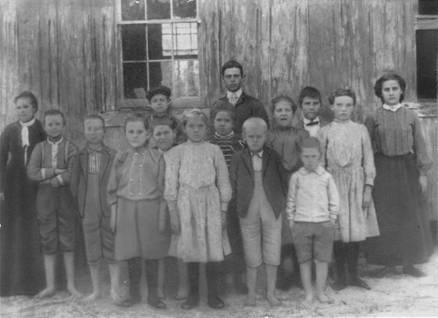 In
the book,
The Making of a Village, A History of Geneva
Florida, it is stated:
In
the book,
The Making of a Village, A History of Geneva
Florida, it is stated: Extinct Towns in the Geneva Area*
Buda - (pronounced beu'-da). Buda was a small town at the intersection of Old Mims Road and Snow Hill Road. It existed during the late 1800's and early 1900's. It was often referred to as "South Geneva". There was a Post Office, store and school (the Buda School). Mail came to Buda from Sanford to Solaria's Wharf on Lake Jesup where it was picked up and brought to the Post Office at Buda.
 In
the book,
The Making of a Village, A History of Geneva
Florida, it is stated:
In
the book,
The Making of a Village, A History of Geneva
Florida, it is stated:
"The first record of a teacher for the Buda School was
found in the Orange County records. Mr.
J. H. Owens taught, in 1878, salary of $30.14.
The first school house at Buda was in the house Winegourd built which
stood east of the Eugene Smith house on the Chuluota road.
Winegourd was a brother-in-law of Mrs. Mary Taylor.
From 1878 through 1885 we have Miss Mary Dart as teacher and from the
number of old timers who went to school under her, we have assurance that she
was there for at least six years. She
was a small lady whose back had been broken.
One teacher came that would not stay and made a Mr. Hilton take her to
the train. She carried a gun to be
sure he did not miss the train. Prof.
Hoyt, stepfather of Miss Dart was next in 1887.
Hoyt Taylor was named for him. Miss
Helen Guinn taught in 1888 and boarded with the Lassiter family.
Helen Guinn Lassiter, Mrs. Helen Alderman, was named for her.
Miss Nettie Wright from Chuluota taught at least 2 terms in 1892-1894.
"Miss Wright was the first to teach in the schoolhouse built on the
West Side of Chuluota road, north of the entrance to the Lizzie James’ place.
Miss Sue “Sudy” Morris was the pretty one from North Carolina in
1895. A Miss Prince was next in
1896. Miss Julia Leake in 1896-1897.
Miss Emma Peters one term, 1898. Mrs.
Garret, from Conway, 1899. Miss
Blanche Wise from Oakland boarded with the Lassiter family.
She was a young girl, about seventeen, who cried a lot because she was
homesick. She was there two terms
between 1900-1902.
Buda on the Map
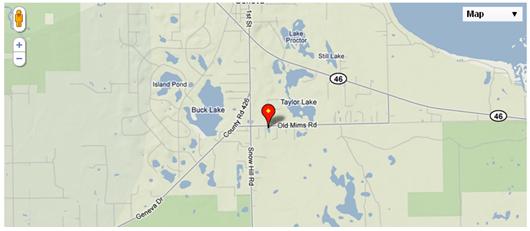
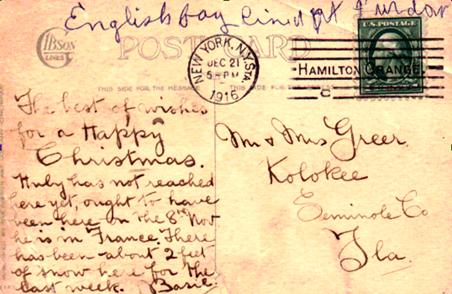 Kolokee
- (not a Creek
place-name, but a word chosen for a railroad station [Wilson (1896), ultimately
from kulkē /kolk-í:/ light, lamp].
Kolokee was a railroad, sawmill, and turpentine town on the FEC Railway
about half-way between Geneva and the Econlockhatchee River.
There was a railway station, a school, (the Kolokee School),
store, post office, and a few homes for railroad and sawmill employees -
mostly managers of these industries. There
was a railroad track siding with quite a few boxcars that were used as temporary
homes for workers and families. Mail
to Kolokee was by train via the Florida East Coast Railway.
Kolokee
- (not a Creek
place-name, but a word chosen for a railroad station [Wilson (1896), ultimately
from kulkē /kolk-í:/ light, lamp].
Kolokee was a railroad, sawmill, and turpentine town on the FEC Railway
about half-way between Geneva and the Econlockhatchee River.
There was a railway station, a school, (the Kolokee School),
store, post office, and a few homes for railroad and sawmill employees -
mostly managers of these industries. There
was a railroad track siding with quite a few boxcars that were used as temporary
homes for workers and families. Mail
to Kolokee was by train via the Florida East Coast Railway.
The Kolokee School was for African-American children in the area and was located on Snowhill Road and was first called Kolokee (the closest named location back then) and later called Snow Hill. It was a one-room school on land donated by Reverend A. J. Muller. It was first situated just to the south of the present Snow Hill Missionary Baptist Church but later moved to the north side of the church and expanded. It remained a one-room school until the Kolokee/Snow Hill School closed in 1971 when the Geneva Elementary School was integrated.
The area is now within the Little Big Econ State Forest and the hiking trail in the area is called the Kolokee Trail.
Kolokee
on the Map
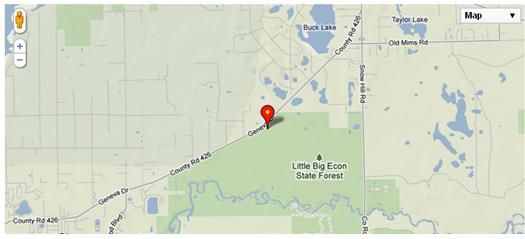
Osceola
- The
Aqua Dulce (Freshwater) tribe of the Timucuan Indians occupied the St. Johns
River from present-day Palatka to Lake Harney.
After the demise of the Timucuan Indians (mostly due to diseases
brought in by the Europeans) a band of Seminole Indians, with about 200 warriors
and Emaltha, better known as King Philip, as their chief, settled in this area
and the area became known as King Philip's Town.
King Philip's son, Coacoochee, also known as Wildcat, lived there as
well.
Some years later, around 1910-12, the Florida East Coast Railway build a rail line and a railroad bridge (trestle) across the river at Osceola and this village became known as Bridge End, because it was at the end of the bridge. Bridge End had a post office and a official postmistress.
In 1916-1918, the Tidewater Cypress Company of Lukens, Florida (near Cedar Key), formed a new company, the Osceola Cypress Company, and moved into the area. They employed about 200 people and built a modern town in this isolated area. It was complete with houses, a doctor’s office, commissary, school, boarding house (all had electricity until 10:00 p.m.), running water, bathrooms, a sewer system, and sidewalks made of timber, which floated when heavy rains came. (See photo of town above.) It was the only town in Seminole County that provided every resident with these municipal services. They called the town Osceola, after the fishing village Osceola, which was named after the Seminole Chief Osceola who had once lived on Lake Harney. The company closed up and left town in the 1940's, taking or selling everything except the vault which was in the company store. The vault still stands on Osceola Road.
Original
Village
of Osceola on the Map
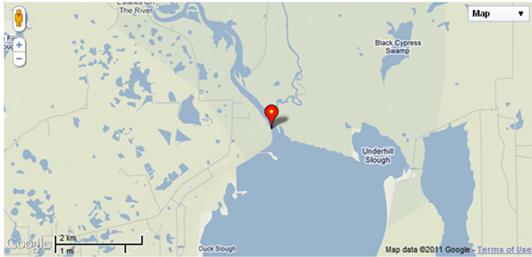
* The
Geneva Historical Society requested brown historical signs at each of the above
locations and they wish to thank Seminole County for placing them (June 2011).
Return to Geneva History page.
Home
Page ![]() Genealogy
Genealogy ![]() The Society
The Society ![]() Museum
Museum ![]() Books, T-Shirts, etc.
Books, T-Shirts, etc.